- Expert tips on growing courgettes
- 1. Choose the right variety
- 2. Start seeds indoors
- 3. Provide plenty of sunlight
- 4. Prepare the soil
- 5. Water regularly
- 6. Prune and train
- 7. Harvest early
- Tips for an early harvest
- 1. Start seeds indoors
- 2. Provide proper lighting
- 3. Harden off seedlings
- 4. Choose a sunny location
- 5. Provide adequate water
- 6. Mulch the soil
- 7. Use a trellis
- 8. Monitor for pests and diseases
- 9. Harvest regularly
- 10. Try succession planting
- Choosing the right variety
- Preparing the soil
- 1. Choose a sunny location
- 2. Clear the area
- 3. Break up the soil
- 4. Test the soil
- 5. Add compost or organic matter
- 6. Create raised beds or mounds
- 7. Mulch the soil
- 8. Allow the soil to settle
- Planting and spacing
- Providing adequate water
- Fertilizing the plants
- 1. Soil preparation
- 2. Nitrogen-based fertilizer
- 3. Balanced fertilizer
- 4. Slow-release fertilizer
- 5. Avoid over-fertilization
- 6. Watering after fertilization
- Protecting against pests and diseases
- 1. Companion planting
- 2. Regular inspection
- 3. Hand-picking pests
- 4. Organic insecticides
- 5. Proper watering
- 6. Mulching
- 7. Crop rotation
- 8. Hygiene measures
- Harvesting and storage
- 1. Timing
- 2. Harvesting technique
- 3. Regular harvesting
- 4. Storage
- 5. Additional storage tips
- “Question-Answer”
- How can I grow courgettes for an early harvest?
- What is the best time to plant courgettes?
- Can I grow courgettes in containers or pots?
- What are some common problems when growing courgettes?
- How often should I water courgette plants?
- Can I save courgette seeds for future planting?
- “Video” Three Simple Zucchini Growing Tips
Growing courgettes, also known as zucchini, can be a rewarding and delicious experience. These versatile and fast-growing vegetables are a staple in many summer dishes, and with a little bit of planning, you can enjoy an early harvest of tender and flavorful courgettes.
Choose the right variety: When selecting courgette seeds or seedlings, opt for early-maturing varieties that are specifically bred for quick growth. Look for varieties that are labeled as “early” or “fast-growing” to ensure a good harvest in a shorter time.
“Choosing an early-maturing variety is key to getting a head start on the growing season. These varieties will germinate quickly and produce fruit in a relatively short amount of time,” says gardening expert Jane Smith.
Start indoors: To give your courgette plants a head start, start them indoors a few weeks before the last frost date in your area. Plant the seeds in biodegradable pots or trays filled with good quality potting soil. Keep them in a warm and sunny spot, and water regularly.
Provide adequate sunlight and warmth: Courgette plants thrive in full sunlight, so choose a location in your garden that receives at least 6-8 hours of direct sunlight each day. Additionally, ensure the soil is warm before planting. You can use black plastic or cloches to warm up the soil and create a favorable environment for the seeds to germinate.
Expert tips on growing courgettes
Courgettes, also known as zucchini, are a popular vegetable in the summer months. They are easy to grow and have a delicious taste that is perfect for salads, stir-fries, and grilling. Here are some expert tips on how to grow courgettes for an early harvest:
1. Choose the right variety
There are many different varieties of courgettes available, so it’s important to choose the right one for your climate and growing conditions. Look for varieties that are known for their early maturing and high yield.
2. Start seeds indoors
To get a head start on the growing season, start your courgette seeds indoors. Sow the seeds in small pots filled with a good quality compost and keep them in a warm, sunny place. Transplant the seedlings outdoors once the danger of frost has passed.
3. Provide plenty of sunlight
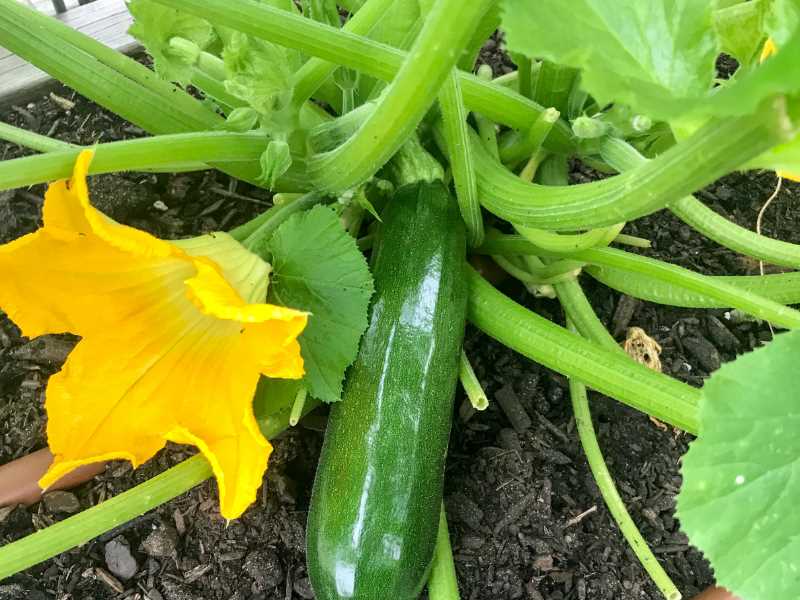
Courgettes love the sun, so make sure they get at least 6-8 hours of direct sunlight each day. Choose a sunny spot in your garden or use containers that can be moved to catch the sun.
4. Prepare the soil
Courgettes thrive in well-drained, fertile soil. Before planting, dig in some organic matter such as compost or well-rotted manure to improve the soil’s fertility and moisture-holding capacity.
5. Water regularly
Keep the soil consistently moist by watering your courgettes regularly. Avoid overwatering, as this can lead to root rot. Mulching around the plants can help to retain moisture and suppress weeds.
6. Prune and train
To encourage bushier growth and maximize the harvest, pinch off the growing tips of your courgette plants once they have reached a height of about 30cm. You can also train the plants to grow vertically on a trellis or support to save space in the garden.
7. Harvest early
For an early harvest, start picking courgettes when they are still small and tender, around 15-20cm in length. Regular harvesting will encourage the plants to produce more fruit.
With these expert tips, you’ll be well on your way to growing a bountiful crop of courgettes in no time. Enjoy the fresh taste of homegrown vegetables all summer long!
Tips for an early harvest
1. Start seeds indoors
To get a head start on the growing season, it’s best to start courgette seeds indoors. This can be done about 4-6 weeks before the expected last frost date in your area. Use seed trays or small pots filled with seed starting mix, and keep them in a warm and well-lit area.
2. Provide proper lighting
Courgettes require a lot of sunlight to grow and produce fruit. If you’re starting seeds indoors, make sure to provide them with sufficient light. You can use fluorescent grow lights or place them near a south-facing window to maximize their exposure to sunlight.
3. Harden off seedlings
Before transplanting your courgette seedlings outdoors, it’s important to harden them off. This means gradually exposing them to outdoor conditions like wind and direct sunlight. Start by placing them outside for a few hours a day, and gradually increase the time over the course of a week.
4. Choose a sunny location
Courgettes thrive in full sun, so choose a location in your garden that receives at least 6-8 hours of direct sunlight per day. This will help ensure optimal growth and early fruit production.
5. Provide adequate water
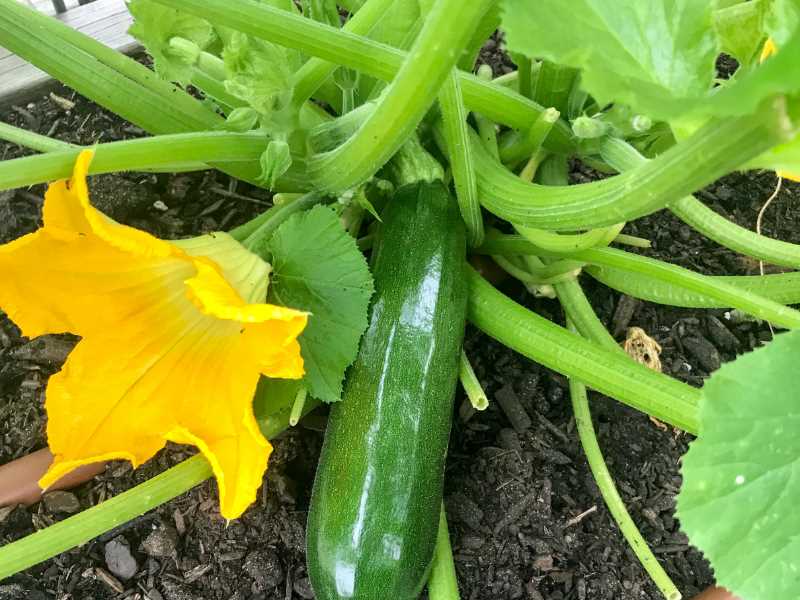
Courgettes need regular and consistent watering to grow well. Water them deeply at least once a week, making sure the soil is moist but not waterlogged. Avoid overhead watering as it can promote the spread of disease.
6. Mulch the soil
Applying a layer of organic mulch around the base of your courgette plants can help retain moisture, suppress weed growth, and regulate soil temperature. This will create ideal growing conditions and promote earlier fruiting.
7. Use a trellis
Training your courgette plants to grow vertically on a trellis or support can help maximize space and increase air circulation. This can result in earlier fruiting as the plants receive more sunlight and have better airflow.
8. Monitor for pests and diseases
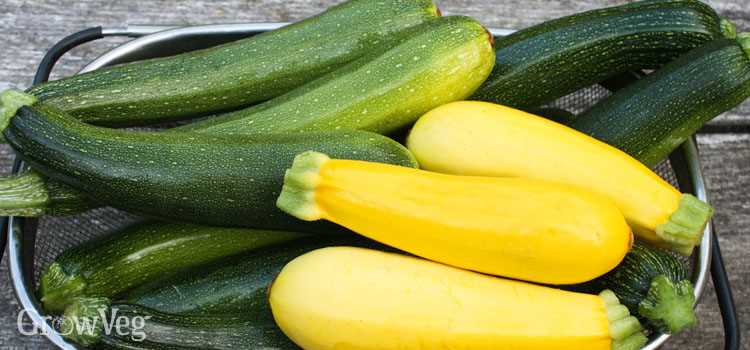
Regularly inspect your courgette plants for pests like aphids and diseases like powdery mildew. Early detection and prompt action can help prevent damage and keep your plants healthy, ensuring an early and abundant harvest.
9. Harvest regularly
To encourage continuous fruit production, harvest your courgettes regularly when they are young and tender. Leaving overgrown courgettes on the plant can inhibit further production. Use a sharp knife or pruners to cut the courgettes from the stem, taking care not to damage the plant.
10. Try succession planting
If you’re looking to extend your courgette harvest throughout the season, consider succession planting. This involves sowing new seeds or transplanting seedlings every 2-3 weeks. This way, you’ll have a constant supply of fresh courgettes from early summer to fall.
Choosing the right variety
When it comes to growing courgettes for an early harvest, it is important to choose the right variety. Different varieties have different growth habits and maturation times, so it is important to consider your specific needs and preferences before making a selection.
Here are some factors to consider when choosing a variety:
- Early maturation: Look for varieties that are known for their early maturation. These varieties will typically produce fruit faster, allowing you to enjoy an early harvest.
- Bush or trailing: Decide whether you want a bush variety or a trailing variety. Bush varieties tend to have a more compact growth habit, while trailing varieties will take up more space but may produce a larger yield.
- Size of fruit: Consider the desired size of the courgette fruit. Some varieties produce smaller fruits, while others produce larger ones. Think about how you plan to use the courgettes in your cooking.
- Pest and disease resistance: Check if the variety you are considering has any resistance to common pests and diseases. This can help minimize the need for pesticides and ensure a healthier crop.
Popular courgette varieties for an early harvest include:
| Variety | Description |
|---|---|
| Early Prolific | A compact bush variety that produces an abundance of small to medium-sized courgettes. |
| Black Beauty | A popular heirloom variety known for its dark green skin and excellent flavor. It has a trailing growth habit. |
| Sungold | An early maturing variety that produces bright yellow courgettes. It has a bush growth habit. |
| Greyzini | A bush variety with grey-green skin and a firm texture. It is known for its excellent flavor. |
| Romanesco | A unique variety that produces light green, ribbed courgettes. It has a trailing growth habit. |
Remember to consider your climate and growing conditions when choosing a variety. Some varieties may be better suited for specific climates or growing methods, so it is always a good idea to consult with a local garden expert or nursery for personalized recommendations.
Preparing the soil
One of the most important steps in growing courgettes is preparing the soil. Here are some expert tips on how to prepare the soil for a successful courgette harvest:
1. Choose a sunny location
Courgettes thrive in full sun, so choose a location in your garden that receives at least 6-8 hours of direct sunlight every day.
2. Clear the area
Before preparing the soil, remove any weeds, rocks, or debris from the area where you plan to grow your courgettes. This will help create a clean and fertile environment for your plants.
3. Break up the soil
Use a garden fork or a tiller to break up the soil to a depth of about 12 inches. This will help improve drainage and allow the roots to penetrate easily.
4. Test the soil
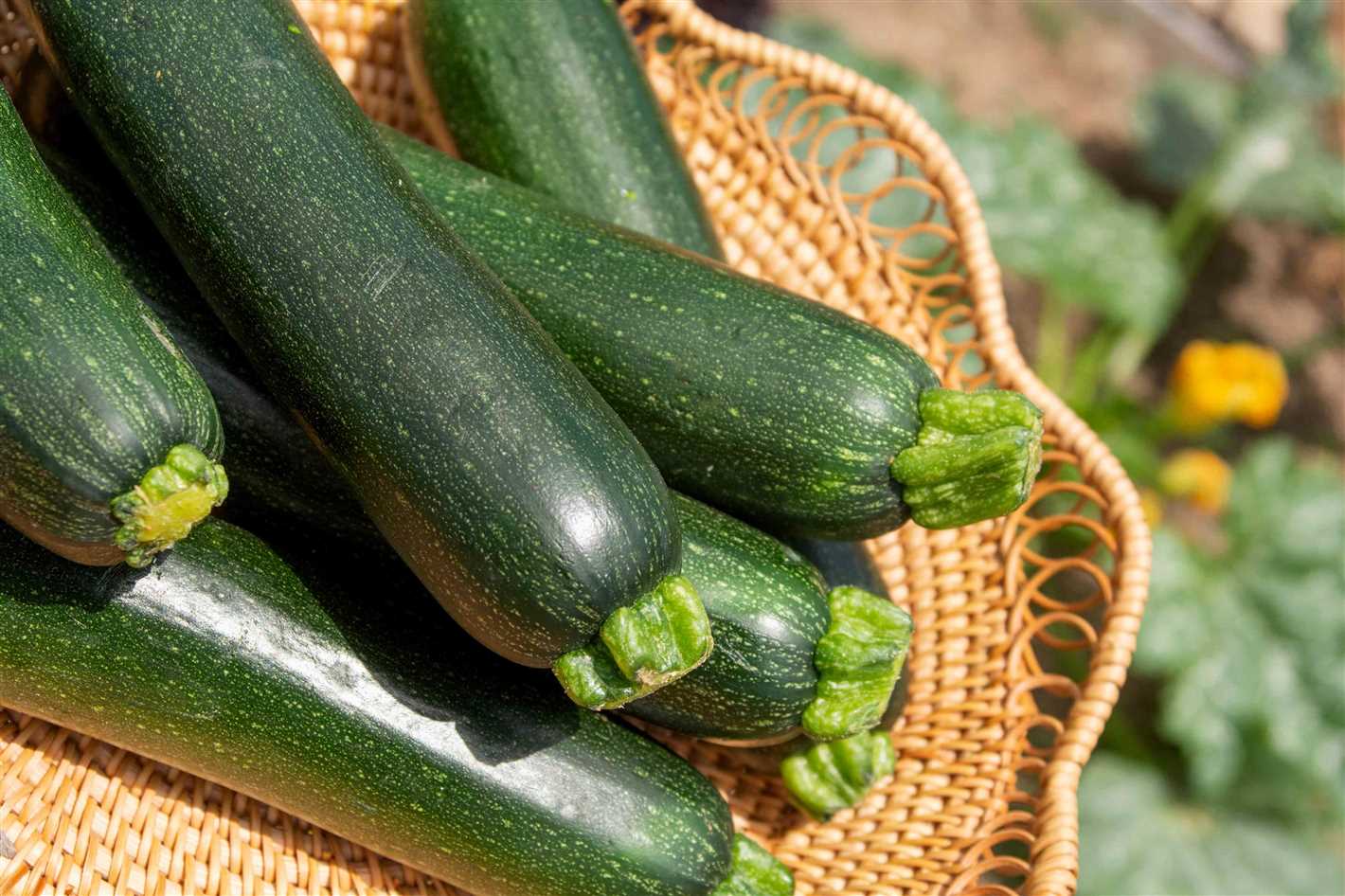
It’s always a good idea to test the soil before planting. You can buy a soil testing kit from a gardening store or send a sample to a lab for analysis. Knowing the pH level and nutrient content of your soil will help you make any necessary amendments.
5. Add compost or organic matter
Adding compost or organic matter to the soil will improve its fertility and structure. Spread a layer of compost or well-rotted manure over the soil surface and mix it in thoroughly. This will help provide essential nutrients and enhance water retention.
6. Create raised beds or mounds
Courgettes prefer well-draining soil, so if your garden has heavy clay or compacted soil, consider creating raised beds or mounds. This will help improve drainage and prevent waterlogging, which can lead to root rot.
7. Mulch the soil
Once you have prepared the soil, apply a layer of organic mulch such as straw or wood chips. Mulching will help suppress weed growth, conserve moisture, and regulate soil temperature.
8. Allow the soil to settle
After preparing the soil, give it a few days to settle before planting your courgette seedlings. This will allow any disturbed soil to resettle and minimize the risk of transplant shock.
By following these steps and ensuring that your soil is well-prepared, you can create an ideal growing environment for your courgette plants and enjoy an early harvest of delicious and nutritious courgettes.
Planting and spacing
When it comes to planting courgettes, timing is key. The ideal time is during late spring or early summer when the soil has warmed up and there is no longer a risk of frost.
Choosing the right spot:
- Find a sunny location in your garden that receives at least 6-8 hours of direct sunlight each day. Courgettes thrive in full sun.
- Ensure the soil is well-drained and rich in organic matter. You can improve the soil by adding compost or well-rotted manure before planting.
- Make sure the spot you choose is sheltered from strong winds, as these can damage the plants.
Spacing:
Courgette plants require plenty of space to grow and spread out. Proper spacing is important to promote healthy growth and prevent overcrowding.
- Leave about 90-120 cm (3-4 feet) between each plant. This allows the plants to receive adequate air circulation and prevents diseases.
- If you are planting multiple rows, leave about 120-150 cm (4-5 feet) between each row to give enough space for the plants to expand.
Planting:
- Before planting, dig a hole that is slightly larger than the root ball of the plant.
- Place the plant carefully into the hole, ensuring that the top of the root ball is level with or slightly above the soil surface.
- Fill in the hole with soil and gently firm it around the plant.
Maintenance:
Once the plants are in the ground, it is important to water them regularly and deeply to encourage deep root growth. Provide about 1-2 inches of water per week, either through rainfall or supplemental irrigation.
Additionally, applying a layer of organic mulch around the plants can help retain soil moisture and suppress weed growth.
When the plants start to produce fruits, it is beneficial to provide support. You can use stakes or cages to keep the plants upright and prevent the heavy fruits from touching the ground.
Providing adequate water
Ensuring that your courgette plants receive adequate water is crucial for their growth and development. Here are some expert tips on how to provide the right amount of water for your courgette plants:
- Consistent watering: Courgette plants require consistent watering throughout the growing season. Water them regularly, especially during dry spells, to keep the soil evenly moist.
- Deep watering: When watering your courgette plants, it’s important to water them deeply. This means watering at the base of the plant so that the water reaches the roots. Shallow watering can lead to shallow root growth and make the plants more susceptible to drought stress.
- Watering in the morning: It’s best to water your courgette plants in the morning. This allows the foliage to dry out during the day, reducing the risk of diseases caused by prolonged moisture on the leaves.
- Avoid overhead watering: Try to avoid watering your courgette plants from above. Watering the foliage can increase the risk of fungal diseases. Instead, focus on watering the base of the plants.
- Use mulch: Applying a layer of organic mulch around your courgette plants can help retain soil moisture and reduce the need for frequent watering. Mulch also helps suppress weed growth, which can compete with the courgette plants for water.
- Monitor soil moisture: Regularly monitor the moisture levels of the soil around your courgette plants. Stick your finger into the soil to check if it feels dry. If it does, it’s time to water. Avoid overwatering, as this can lead to root rot and other problems.
By following these tips and providing adequate water, your courgette plants will stay healthy and produce a bountiful early harvest.
Fertilizing the plants
Proper fertilization is key to the healthy growth and development of courgette plants. Here are some expert tips on how to fertilize your courgettes:
1. Soil preparation
Before planting your courgettes, prepare the soil by adding compost or well-rotted manure. This will enrich the soil with nutrients and improve its fertility.
2. Nitrogen-based fertilizer
Apply a nitrogen-based fertilizer to promote initial growth and leaf development. This will help the courgette plant establish a strong foundation.
3. Balanced fertilizer
Once the courgette plants start flowering, switch to a balanced fertilizer that contains equal amounts of nitrogen, phosphorus, and potassium. This will support overall plant health and encourage fruit production.
4. Slow-release fertilizer
Consider using a slow-release fertilizer to provide a consistent supply of nutrients to the courgette plants over an extended period. This can help prevent nutrient deficiencies and ensure continuous growth.
5. Avoid over-fertilization
Be cautious not to over-fertilize your courgettes, as this can lead to excessive vegetative growth and reduced fruiting. Follow the instructions provided on the fertilizer packaging and adjust the application rate accordingly.
6. Watering after fertilization
After applying fertilizer, make sure to water the courgette plants thoroughly. This will help the nutrients penetrate the soil and reach the plant’s roots, maximizing their absorption and utilization.
By following these fertilization tips, you can ensure that your courgette plants receive the necessary nutrients for healthy growth and an early harvest.
Protecting against pests and diseases
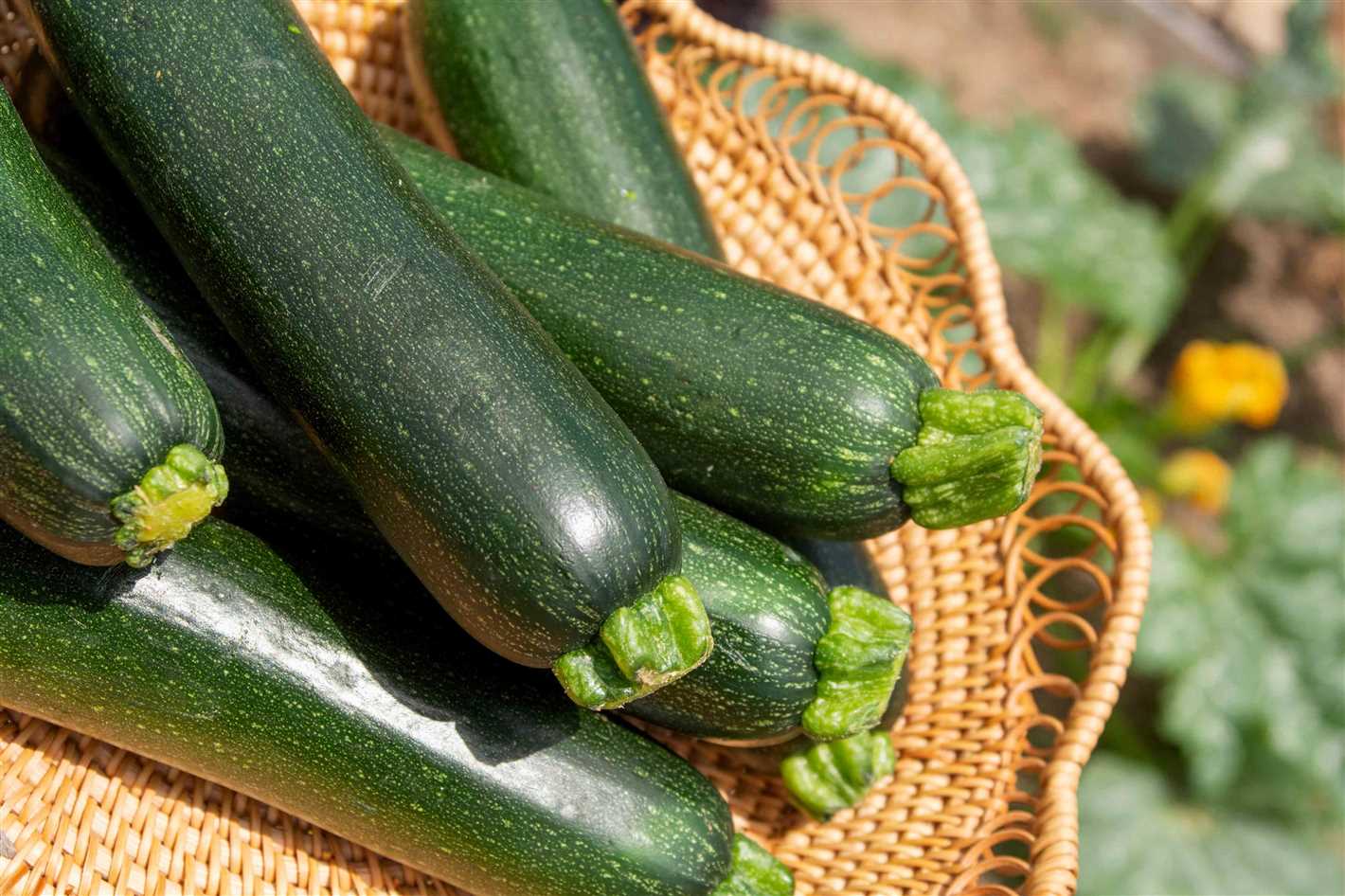
To ensure a healthy and abundant crop of courgettes, it is important to protect your plants against common pests and diseases. Here are some tips to help you keep your courgette plants pest-free:
1. Companion planting
Planting companion plants such as marigolds, nasturtiums, and basil around your courgette plants can help deter pests. These plants release natural chemicals that repel insects.
2. Regular inspection
Make it a habit to inspect your courgette plants regularly for any signs of pests or diseases. Look for holes in the leaves, yellowing or wilting of the plants, or any unusual spots or markings.
3. Hand-picking pests
If you spot any pests on your courgette plants, such as aphids or caterpillars, it is best to remove them by hand. Wear gloves and carefully pick off the insects to prevent further damage to the plants.
4. Organic insecticides
If the pest infestation is severe, you may need to use organic insecticides. There are various options available, such as neem oil or insecticidal soap. Follow the instructions on the packaging and use them sparingly.
5. Proper watering
Water your courgette plants at the base of the plant, avoiding wetting the foliage. Wet leaves can create a favorable environment for fungal diseases. It is best to water early in the morning to allow the leaves to dry during the day.
6. Mulching
Applying a layer of organic mulch around your courgette plants can help deter pests and diseases. Mulch helps to retain moisture, prevent weed growth, and create a barrier that pests find difficult to penetrate.
7. Crop rotation
Rotate your courgette plants with other vegetables from year to year to prevent the buildup of pests and diseases in the soil. This practice helps to break the life cycle of pests and reduces the risk of plant infections.
8. Hygiene measures
Practice good garden hygiene by removing any fallen leaves or plant debris from the area around your courgette plants. These can harbor pests and diseases, so it is important to keep the garden clean and tidy.
By following these tips and keeping a watchful eye on your courgette plants, you can protect them from pests and diseases, ensuring a successful and bountiful harvest of delicious courgettes.
Harvesting and storage
Harvesting courgettes at the right time is crucial to ensure optimal taste, texture, and nutritional value. Here are some expert tips on when and how to harvest your courgettes:
1. Timing
Most courgette varieties are ready to be harvested when they reach around 6-8 inches in length. However, it’s best to check the specific recommendations for the variety you are growing. Harvesting too early may result in smaller courgettes, while harvesting too late can lead to overripe and less flavorful fruit.
2. Harvesting technique
When harvesting courgettes, it’s important to use a sharp knife or pruners to cut the fruit from the plant. Be careful not to damage the plant or nearby fruit during the process. Avoid twisting or yanking the courgette, as this can cause damage to the plant.
3. Regular harvesting
Regularly harvesting courgettes encourages the plant to produce more fruit. Check your plants every 1-2 days and harvest any courgettes that are ready. Leaving overripe or oversized courgettes on the plant can slow down the production of new fruit.
4. Storage
If you have harvested more courgettes than you can eat immediately, proper storage is essential to extend their shelf life. Here’s how you can store your courgettes:
- In the refrigerator: Place unwashed courgettes in a perforated plastic bag or an open container and store them in the vegetable crisper section of your refrigerator. They can stay fresh for up to a week.
- In the freezer: Courgettes can be frozen for longer-term storage. To freeze courgettes, blanch them in boiling water for 3 minutes, then plunge them into ice water to cool. Pat them dry, slice or grate them, and pack them into airtight freezer bags or containers.
5. Additional storage tips
Here are a few additional tips to help you store and use your courgettes:
- Don’t wash before storing: Courgettes have a natural protective coating that helps them stay fresh longer. Wash them just before using.
- Store away from moisture: Keep your stored courgettes away from excessive moisture, as it can lead to spoilage.
- Use frozen courgettes: Frozen courgettes are great for soups, stews, and sauces. They may lose some of their crispness after thawing, so they are best used in cooked dishes.
By following these harvesting and storage tips, you can enjoy the delicious taste of courgettes from your garden for an extended period.
“Question-Answer”
How can I grow courgettes for an early harvest?
To grow courgettes for an early harvest, you can start by sowing the seeds indoors in early spring, around 4-6 weeks before the last frost date. This will give the plants a head start and allow them to grow stronger before being transplanted outside. Additionally, you can use protective covers such as cloches or row covers to create a warmer microclimate around the plants and promote faster growth. Regularly feeding and watering the plants, as well as providing them with adequate sunlight, will also help to speed up their growth and ensure an early harvest.
What is the best time to plant courgettes?
The best time to plant courgettes is in late spring or early summer, once the danger of frost has passed and the soil has started to warm up. Courgettes are warm-season plants and require soil temperatures of at least 18°C (65°F) for optimal growth. Planting them too early, when the soil is still cold, can lead to poor germination and stunted growth. It’s important to consider your local climate and soil conditions when deciding the best time to plant courgettes.
Can I grow courgettes in containers or pots?
Yes, you can definitely grow courgettes in containers or pots. In fact, it’s a popular option for those with limited space or who prefer to have more control over the growing conditions. When growing courgettes in containers, make sure to choose a large pot that is at least 16 inches deep and wide, to accommodate the plant’s sprawling growth. Use a well-draining potting mix and water the plant regularly, as container-grown plants can dry out more quickly. It’s also important to provide support for the plant, such as a trellis or stake, to keep it upright and prevent the fruits from touching the ground.
What are some common problems when growing courgettes?
Some common problems when growing courgettes include powdery mildew, bacterial wilt, squash bugs, and blossom end rot. Powdery mildew is a fungal disease that appears as a white powdery coating on the leaves and can be treated with fungicides. Bacterial wilt is caused by bacteria and can lead to wilting and death of the plant. Unfortunately, there is no cure for bacterial wilt, so it’s important to remove and destroy affected plants to prevent the spread of the disease. Squash bugs are common pests that feed on the leaves and fruits of courgette plants. Regular inspection and manual removal of the bugs, as well as the use of organic insecticides, can help control their population. Blossom end rot is a physiological disorder that causes the fruits to develop black, sunken areas on the blossom end. It is often caused by calcium deficiency or irregular watering. To prevent blossom end rot, make sure to provide consistent moisture to the plant and amend the soil with calcium if necessary.
How often should I water courgette plants?
Courgette plants require regular watering, especially during hot and dry periods. As a general guideline, aim to water the plants deeply once or twice a week, depending on the weather conditions. The soil should be kept moist but not waterlogged, as excessive moisture can lead to root rot. It’s best to water the plants in the morning or early afternoon, to allow the foliage to dry before nightfall and reduce the risk of fungal diseases. Mulching around the plants can also help to retain moisture in the soil and reduce the frequency of watering.
Can I save courgette seeds for future planting?
Yes, you can save courgette seeds for future planting. To do so, allow the fruits to fully mature on the vine and become overripe. Once the fruits are fully ripened, cut them open and scoop out the seeds. Rinse the seeds in water to remove any pulp or debris, and then spread them out on a paper towel to dry. Once completely dry, store the seeds in a cool and dry place, such as an airtight container or envelope. It’s important to label the seeds with the variety and the date of harvest, to keep track of their viability. Saved courgette seeds can be planted in the next growing season, but keep in mind that cross-pollination with other squash varieties may result in hybrid seeds.







